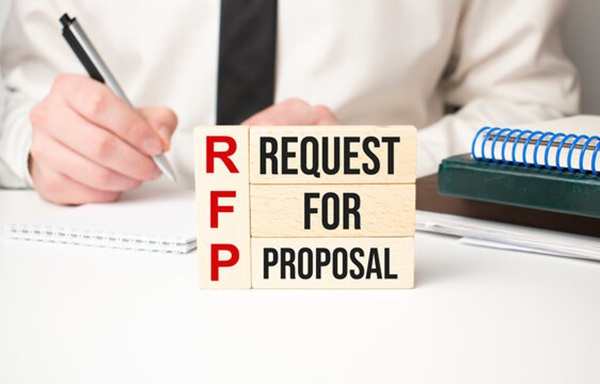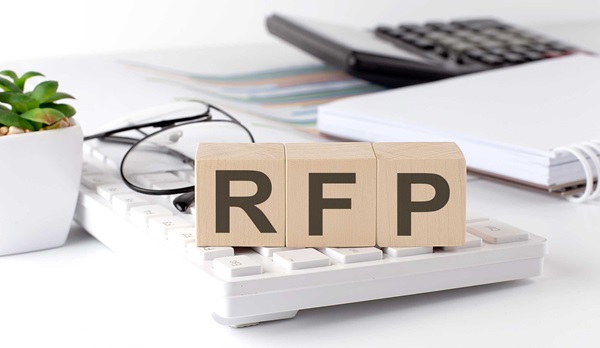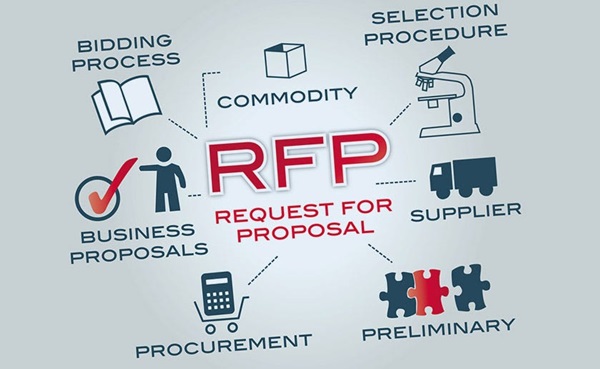How to Submit a Website Design Request (Website RFP)
The time has come for you to have a website or redesign your current one. Therefore, you need to write a Request For Proposal (RFP) for web design. A quick search yields numerous web proposal templates, but they might not be accurate or align with your goals and needs for website design. You need a Website RFP that clearly articulates your needs, ensuring a suitable response from a designer in the final product. But how?
In this article, I will guide you step-by-step through writing a Website RFP, teaching not only the basics but also how to better utilize web designers’ assistance. I aim to provide you with information to prevent common mistakes and place important aspects in your Website RFP correctly.
A good Website RFP clearly defines the project goals, content, themes, criteria, communication methods, and schedule. Sometimes, reading a Website RFP can reveal how professional the requesting company is. A Website RFP is not about flattery or fancy paperwork.
A secret: Some professional website design companies dislike responding to or reviewing a Website RFP. If you use a Website RFP to select a web development company, you might miss out on many talents. When writing a Website RFP, remember it’s not just a request to find a company to design your website. It’s about establishing communication and introducing yourself so they might choose to work with you. You’re not just selecting a company; you hope they select you too. The last thing you want is to miss the opportunity to work with a good design company because your request might be misinterpreted as whether you are a good client or not. Now let’s talk about the basics:
How should your Website RFP be structured?
Introduction or Project Overview: This section should contain vital information based on which the design company decides whether the project is worth their time. If written correctly, the design company will continue reading your Website RFP.
Your Company Information: Introduce your company in one or two paragraphs. No need for a long history or excessive details, just enough information for someone unfamiliar with your work to get an understanding.
Your Audience: Here, you should introduce your audience or customers. This section provides important information to designers and web developers. Identifying the type of audience greatly affects the design of the user interface and the visitor’s experience.
New Website Goals: Specify the primary goals of your website. Then list secondary and further goals. A website built for sales has a completely different appearance and functionality from one built for education.
Current Website: Honestly state what’s wrong with your current website. The more specific you are, the better. You won’t be judged for your website’s current problems.
New Website Capabilities and Functionality: List the essential features of your new website. The more specific you are in this section, the better the designers can assess the cost and deliver a better product. This differs from your website goals and focuses on the precise functionalities.
New Website Wishlist: List the less critical functionalities. Features that you might choose depending on cost and time. Separating this section allows for better decision-making.
Business Details: If your website has e-commerce capabilities, you must list today’s products. It’s also important to forecast what products might be added in the future. The number of items directly affects the design, support, and costs. Therefore, consider the future as well.
Budget Details: Specify the budget amount, payment methods, and any potential limitations.
Proposal Response: List what you expect the design company to provide in their proposal response. Each design and development company has a different workflow. Providing such a list helps find a clear response that aids your decision-making.
Website RFP and Project Timeline: Discuss the phases, timelines, and completion date of the project. Also, inform the design company when you will make your decision and announcement. Ensure your timelines are realistic.
How to write it?
Now that you have basic information about the structure of a Website RFP, you’re ready to write one. You want your Website RFP to stand out and be better, different, and more articulate than others. The quality of your request can vary, and it depends on how much work you want to put into it.
Define your goals
Before starting to write your requirements for the new website, do some brainstorming. What’s the most important thing you want your website to do? Provide information to potential customers? Sell your product? Generate leads for your sales team? Serve as a resource for anyone in your industry? Be a landing spot for your PPC ads? You likely have many goals you intend to achieve through your website, but it’s necessary to write them all down and then prioritize. Identify your most important goal. Then, define a few more goals that are second priority but still related to the main goal.
Example:
– Our primary priority is to generate sales leads for our sales team. Our second goal is to educate potential buyers about our service or product and provide relevant resources.
– Our main priority is to gain credibility for attracting potential investors. Our second goal is to facilitate communication with our team through the website and social networks.
Be honest about your current website:
If you currently have a website, examine it conscientiously and honestly. Specifically state why your current website is insufficient or not working, and identify its problems accurately. Do users or customers not know where to find the information they need? Do you not have enough website traffic or the ability to support users? Despite a beautiful user interface, do your employees struggle with entering information on the site? What complaints do you commonly receive about your website? What do you hope will change on your website?
Example:
– With our website’s current structure and pages, we can’t find the product we want. The details of the menu change on different pages, which is very confusing.
– Our website design is very dry. Although there are many logos, none are clear and eye-catching.
– Customers always tell us they receive an error during the purchase process and have to call us to complete their orders.
Specify the essential and optional functionalities of your website:
This is the part for which the web designer and developer will bill you. It’s crucial to be precise and list the necessary and optional functionalities (depending on cost and time). The more information you have, the better you can make decisions.
Example:
– It’s essential that we have an accurate and efficient store locator visible on all devices. Optional features: It would be great if we had an interactive map with various scales and tools.
– We need a blog to share new information. Optional feature: We would like a complete library of various types of information, including text, photos, and videos.
Aim directly
The best Website RFP can be very simple: a list of current website problems followed by a list of expectations for the new website and exactly who the audience is. A Website RFP can be devoid of technical jargon for clarity. Such a request allows web designers and developers to easily respond to such a clear and specific request, outline their strategy in detail, and address the problem. This process allows both parties to save time by taking shortcuts.
Example:
– We know our current website is a disaster. But we precisely know the goals of our new website. We’ve spent a lot of time defining our audience and customers.
– Currently, we don’t have enough money to redesign our entire website. But we want to change the company logo. Right now, we need a simple and user-friendly website for content production. In the future, a full website redesign might be necessary.
Ask the right questions
While writing your Website RFP, you may encounter many questions. For example: Which tools, platforms, and functionalities are suitable? Of course, you don’t want to limit your audience with such questions or suggest they must follow these specifics. Try to ask your questions openly so there are opportunities for proposals. After all, your audience has years of web development experience and surely can offer better options as professionals. Remember, you don’t have to be an expert. You might not know all aspects of the work, so there’s no need to pretend and request functionalities and characteristics you don’t fully understand. Instead, explain the desired outcomes, elaborate on your goals, and ask for further recommendations. A good company will offer various tools and ways to achieve those goals.
Instead of asking “How many portal sites do you recommend?” ask “What approach do you suggest for responding to multiple audiences?”
Instead of asking “Which WordPress plugin do you use for Twitter integration?” ask “What’s your recommendation for bringing social media audiences to a website?”
Segment your budget
Yes, it’s better to include your budget in your request. This prevents wasting your time, especially when facing a very expensive company. Specifying a budget also helps a compatible company tailor the goals, functionalities, and capabilities of the website to your allocated budget.
However, if you are not clear about your approximate budget, the target company might propose good features but far beyond your budget. Knowing your budget, they might offer discounts. A good design and development company will discuss your budget limitations against your needs and transparency in the end is rewarding.
– We have roughly 10 million tomans budgeted for a new website. But we’d like to complete the project for 7 million tomans and spend the remainder on content marketing. We want to know your suggestion on how to spend this budget more effectively.
– We have a 7 million toman budget for the website and can pay it at the end of the year. We are willing to negotiate the payment method with you. Is there a possibility to plan for more features and pay next year?
Show your personality
This works for all companies. If you are not a company with several international branches, your company still has its personality. Personality sometimes means being trustworthy, professional, and credible. Or being disorderly, inexperienced. Whatever your company is, your Website RFP should show it. This point is about expectations and communication. Designers need to know what type of company and audience they are working for.
– Our company is very dynamic and modern; our customers should feel this.
– We are willing to invest in a Case Study based on real conditions. But we cannot disclose our customers’ information. We want to establish effective communication with our audience and have them trust us.
Include important information:
Website RFP Timing: The RFP submission time, the last opportunity for response, and the decision-making and selection time.
Website Construction Goals: Utilization date (make sure this time is realistic, as it varies among different companies and depending on the website type). If you expect your website to be operational in a month, it’s unlikely a company can provide the quality and timeline you require.
Contact Information: Specify where the RFP response should be sent.
Send your Website RFP to suitable companies
If you don’t have a list of web design and development companies, you can find them here:
– Google: It might seem obvious, but if a web design company is professional, it should demonstrate its capability on its own website. Google will show whether the company’s website has implemented SEO. Does the company’s website appear on the first page of Google when you search for “web design”?
– If you like a website, even if it’s not in your industry, it can help. Typically, the designer’s address or specifications are found at the bottom of web pages, and you can contact the designing company using this information.
– Social Networks: Companies that are professional in web design and online marketing are present in the virtual space. If their work is good, their customers will confirm it on social media.
– Inquire: Verbal communication with friends and colleagues is still a way to find information. Surely someone around you has experience designing or redesigning a website and can introduce someone to you.
The final word: A Website RFP is different from a request for a quote
A Website RFP is not suitable for asking for a website design price. Responding to a Website RFP is very time-consuming for companies. With this request, you’re specifically asking about your unique needs in web design.
If you want to get a price, ask directly what their price for a certain type of site (similar to your needs) would be approximately. This way, you can get approximate prices from many design companies with time savings for yourself and others, and then select a few for sending RFPs.
Streamline your next web project with Imazh Branding Studio’s Website RFP services, designed to match you with the ideal solutions for your digital success.



























